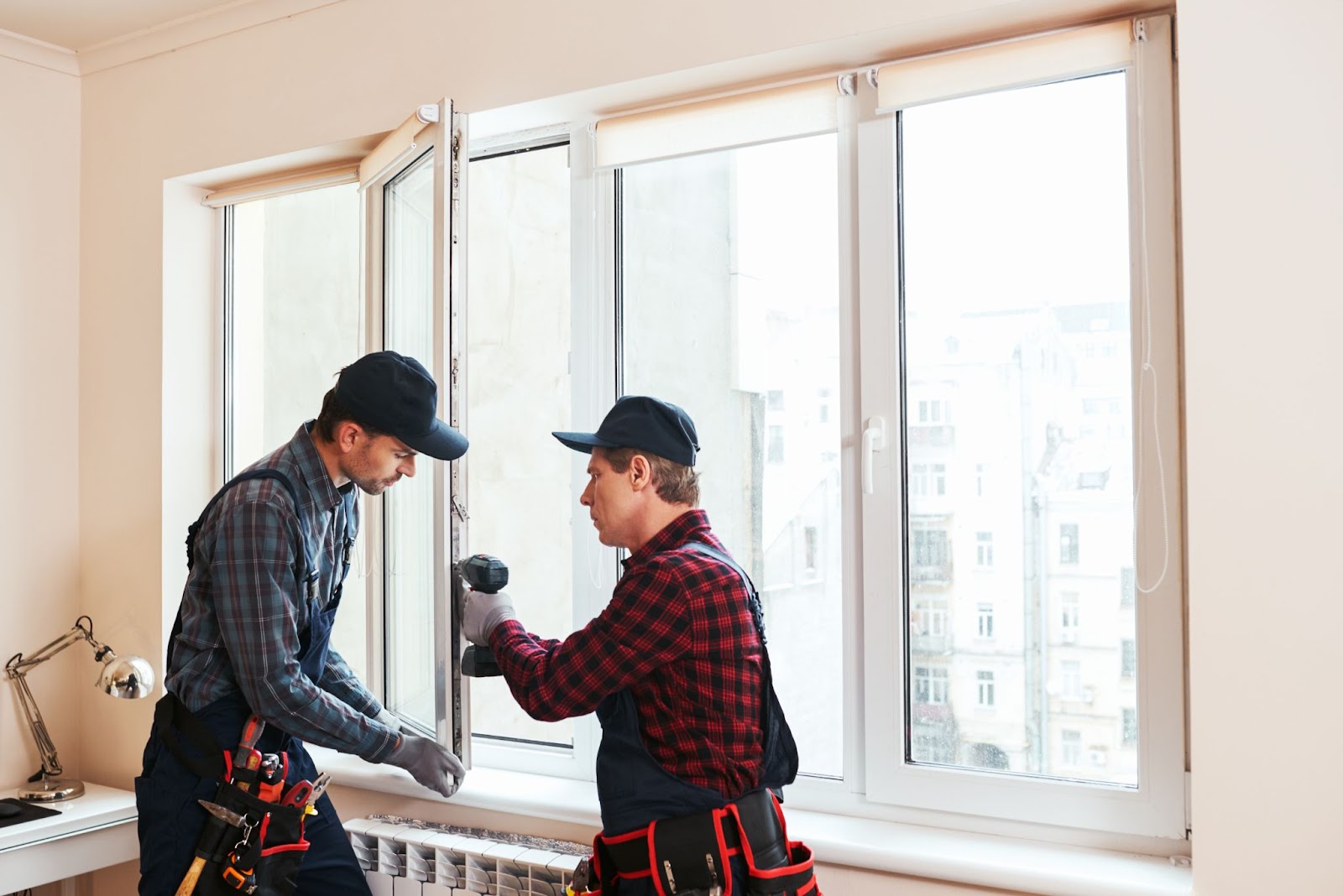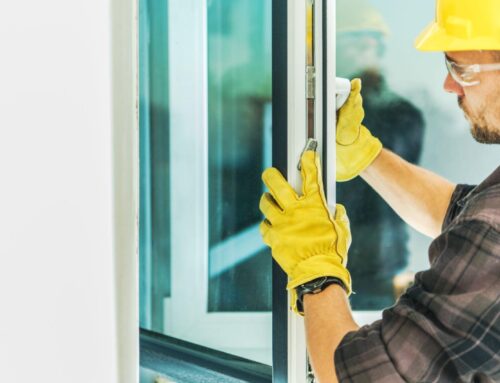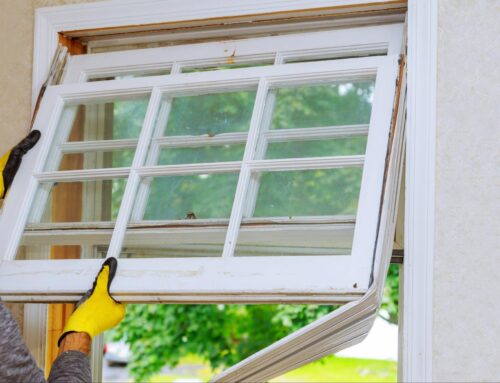Energy efficiency in a home depends on the quality of windows, making the right replacement a key factor in reducing energy costs. Window glass replacement improves insulation, with options like Low-E coatings and gas-filled panes enhancing thermal performance. Frame materials and installation methods influence heat retention and air leakage, affecting indoor comfort and utility bills. Choosing the best window replacement requires considering climate, glass technology, and sealing techniques to maximize efficiency and long-term savings.
What Makes the Best Window Replacements Energy Efficient?
Energy-efficient windows help maintain indoor temperatures, reduce energy consumption, and lower utility bills. Choosing the right replacement involves looking at specific features that improve insulation, limit heat transfer, and prevent air leakage. Glass type, frame material, and sealing quality all contribute to how well a window can enhance a home’s overall efficiency.
Low-E Glass Coating
Low-emissivity (Low-E) coatings minimize heat transfer by reflecting infrared light while allowing natural light to pass through. This technology helps keep indoor spaces warmer in winter and cooler in summer without overworking heating and cooling systems. Different Low-E coatings are available, each designed to optimize performance based on climate and sunlight exposure.
Double or Triple Glazing
Multi-pane windows improve insulation by trapping air or gas between layers of glass, reducing heat loss and outside noise. Double glazing balances cost and performance, while triple glazing provides enhanced efficiency for extreme climates. The added layers create a barrier that limits temperature fluctuations inside the home.
Gas-Filled Panes
Argon and krypton gas fillings act as insulators, reducing heat transfer between glass panes. These inert gases are denser than air, improving thermal resistance without compromising visibility. Krypton performs better in thinner spaces, while argon is more cost-effective for standard double-pane windows.
Insulated Window Frames
Frame material affects how well a window retains heat and resists outside temperatures. Vinyl, fiberglass, and composite frames offer better insulation than aluminum frames, which tend to conduct heat. A well-insulated frame reduces energy loss, making the home more comfortable throughout the year.
Proper Sealing and Weatherstripping
Gaps and poor sealing allow drafts that undermine a window’s efficiency, increasing energy consumption. High-quality weatherstripping and airtight seals prevent air leakage, improving insulation and indoor comfort. Regular maintenance ensures long-term performance and prevents deterioration.
Best Window Replacement Types for Maximum Energy Savings
Choosing the right window replacement improves energy efficiency by reducing heat loss, blocking drafts, and optimizing indoor temperature control. Different window styles offer varying insulation levels, ventilation, and sealing, affecting overall performance. The best type depends on climate, home orientation, and energy-saving goals.
Casement Windows
When closed, casement windows provide a tight seal, preventing air leaks and enhancing insulation. Hinged on the side, they swing outward, allowing maximum ventilation when needed. The locking mechanism pulls the sash firmly against the frame, reducing energy loss compared to sliding or single-hung windows. Properly installed casement windows improve airflow while maintaining indoor temperature stability.
Double-Hung Windows
Double-hung windows feature two movable sashes, offering flexibility for ventilation and cleaning. Modern designs include weatherstripping and insulated frames to reduce air infiltration. Energy-efficient models often use Low-E glass and gas-filled panes to improve thermal performance. Choosing high-quality materials ensures better durability and long-term energy savings.
Fixed Windows
Fixed windows remain sealed shut, making them one of the most energy-efficient options. Their lack of moving parts eliminates gaps where air could escape, improving insulation. Large fixed windows with Low-E coatings and multiple glazing layers maximize natural light without excessive heat gain. Strategic placement enhances energy savings while maintaining a comfortable indoor environment.
Sliding Windows
Sliding windows operate on a horizontal track, providing easy use and unobstructed outdoor views. Their energy efficiency depends on high-quality seals and insulated frames that minimize heat transfer. Modern designs include double or triple glazing to enhance performance in extreme temperatures. Proper installation ensures smooth operation while preventing air leaks.
Awning Windows
Awning windows are hinged at the top and open outward, creating a weather-resistant seal when closed. Their design prevents rain from entering while allowing airflow, making them suitable for various climates. When combined with energy-efficient glass, they enhance insulation and improve indoor comfort. These windows work well in areas requiring ventilation without compromising thermal efficiency.
Best Window Replacement for Various Climates
Climate conditions influence how well a window replacement performs in terms of insulation, heat retention, and energy savings. Some windows work better in cold regions by reducing heat loss, while others minimize heat gain in warmer climates. Choosing the right window type ensures better indoor comfort and lower energy costs throughout the year.
Triple-Pane Windows for Cold Climates
Triple-pane windows provide superior insulation by trapping heat inside and blocking cold drafts. Gas-filled spaces between the panes reduce thermal transfer, preventing energy loss during winter months. Low-E coatings help reflect indoor heat while allowing natural sunlight to warm the space. A well-sealed frame prevents air leaks, lowering heating costs in freezing temperatures.
Low-E Coated Windows for Hot Climates
Low-E-coated windows reduce solar heat gain, keeping indoor temperatures cooler without overloading air conditioning systems. These coatings reflect infrared light while allowing visible light to pass through, improving comfort without sacrificing natural illumination. Multiple glazing layers combined with argon or krypton gas fillings enhance thermal resistance. Frames made from materials with low heat conductivity, such as fiberglass or vinyl, further improve efficiency.
Composite Frames for Humid Climates
Composite window frames resist moisture, warping, and rot, making them ideal for humid regions. Unlike wood, composite materials do not swell or deteriorate when exposed to excessive moisture. Sealed multi-pane glass prevents condensation buildup, maintaining energy efficiency over time. Combining these frames with insulated glass ensures long-term durability in high-humidity environments.
Impact-Resistant Windows for Storm-Prone Climates
Impact-resistant windows withstand strong winds, heavy rain, and flying debris, making them essential in hurricane-prone areas. Laminated glass and reinforced frames provide structural integrity while maintaining energy efficiency. These windows also reduce noise pollution and enhance security, adding extra value beyond storm protection. Proper installation ensures a secure fit, preventing water infiltration and air leaks during extreme weather.
Smart Glass Windows for Mixed Climates
Smart glass technology adjusts its tint based on sunlight exposure, optimizing energy efficiency throughout different seasons. Electrochromic or thermochromic coatings help control heat gain and glare without additional window treatments. This adaptability allows homeowners to maintain indoor comfort without constantly adjusting blinds or curtains. Combining smart glass with insulated frames improves year-round performance in areas with fluctuating temperatures.
Best Window Replacement Installation for Long-Term Durability
Long-term performance depends on selecting durable materials, proper installation, and high-quality sealing. Some window types last longer due to their sturdy construction and resistance to weather-related damage. Choosing the right replacement reduces maintenance needs while maintaining energy efficiency over the years.
Fiberglass Windows
Fiberglass windows offer exceptional durability, resisting warping, rotting, and corrosion over time. Their low expansion and contraction rates prevent air leaks and maintain a consistent seal in different weather conditions. Energy-efficient glazing and strong frames ensure long-term performance with minimal maintenance. Unlike wood, fiberglass does not require frequent repainting or refinishing, making it a cost-effective choice.
Vinyl Windows
Vinyl windows provide a long-lasting, low-maintenance solution for homeowners looking for reliable insulation. Modern vinyl frames resist moisture, preventing mold, peeling, and cracking. Multi-chambered designs improve thermal performance, reducing heat transfer and energy loss. Their affordability and resistance to weathering make them a practical option for long-term use.
Aluminum-Clad Windows
Aluminum-clad windows combine the strength of aluminum with the insulation benefits of wood or composite materials. The exterior layer resists rust, dents, and UV damage, while the interior frame offers better energy efficiency. This hybrid design enhances durability without compromising on aesthetics or performance. Proper sealing and weatherstripping prevent drafts, ensuring efficiency throughout the window’s lifespan.
Composite Windows
Composite windows blend wood, fiberglass, and PVC to create a strong and energy-efficient structure. Their resistance to moisture and temperature fluctuations prevents warping, extending their usability. Insulated glass and multi-layered frames help maintain indoor comfort while reducing energy costs. With minimal maintenance requirements, composite windows offer a reliable long-term solution.
Tips for Choosing the Best Window Replacement
Selecting the right replacement windows improves energy efficiency, enhances home value, and reduces maintenance needs—factors like frame material, glass type, and installation quality impact long-term performance. Choosing windows designed for specific climate conditions ensures better insulation and durability.
Check the Window’s U-Factor and SHGC
The U-factor measures a window’s insulation ability, with lower values indicating better energy efficiency. Solar Heat Gain Coefficient (SHGC) determines how much solar heat passes through, affecting indoor temperatures. Windows with a low U-factor and appropriate SHGC help balance heating and cooling needs. Matching these ratings to climate conditions ensures optimal energy savings.
Ensure Proper Installation
Professional installation prevents issues like air leaks, poor sealing, and misalignment. Not adequately installed Windows can lead to drafts, water damage, and reduced efficiency. Experienced installers use the proper techniques to secure frames and apply weatherproofing materials. High-quality installation extends the lifespan of the windows while maintaining energy performance.
Look for Warranty and Manufacturer Reputation
A strong warranty protects against defects and long-term performance issues. Reputable manufacturers offer guarantees on materials, craftsmanship, and energy efficiency standards. Checking customer reviews and certifications ensures reliable quality before making a purchase. Choosing a trusted brand reduces the risk of early wear or installation failures.
Choose the Best Window Replacements to Reduce Energy Costs
Investing in the best window replacement lowers energy bills by improving insulation and reducing heat transfer. High-performance windows provide a strong return on investment (ROI) by cutting heating and cooling expenses while increasing home value. ENERGY STAR-rated windows meet strict efficiency standards, ensuring long-term savings without sacrificing comfort. Proper installation and durable materials maximize performance, helping homeowners maintain lower utility costs for years.
Visit the Resilience Glass blog to learn how the best window replacement can improve energy efficiency and home comfort.







